The Toyota Mega Cruiser Is Japan's Greatest Off-Road Machine
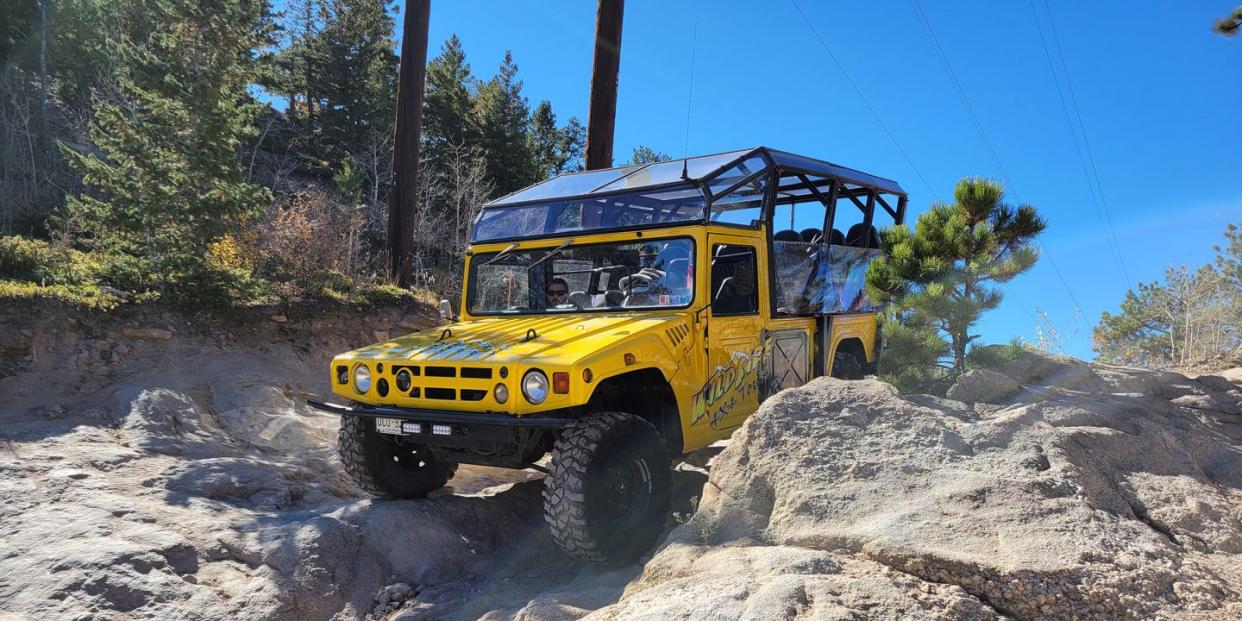
The circumstances surrounding Japanese automotive manufacturing in the Nineties and the crop of unique, wonderfully overengineered, technically advanced vehicles born during this period are legendary. Supras, Skylines, Wankel RX-7s, and the original NSX elicit just as strong emotions today as they did when their images first hit PlayStation discs. From the attainable fun of the NA Miata and Integra Type R to the Lexus LS400 that emerged to take on “the world’s best car” at half the price, seemingly every niche of the car industry was headlined by something interesting and Japanese.
Toyota–the creator of the MkIV Supra and LS400–desired world domination in one more segment. More than any OEM not named Land Rover or Jeep, Toyota is synonymous with off-roading. In 1995, the company penned the Stairway to Heaven of the 4x4 genre. Under the pretext of producing a domestic foil for the US military’s big, intimidating HMMWV (Humvee), the largest of Japan’s “Big Three” cooked-up something so much gnarlier than its renowned Land Cruiser that they dubbed it “Mega Cruiser.”
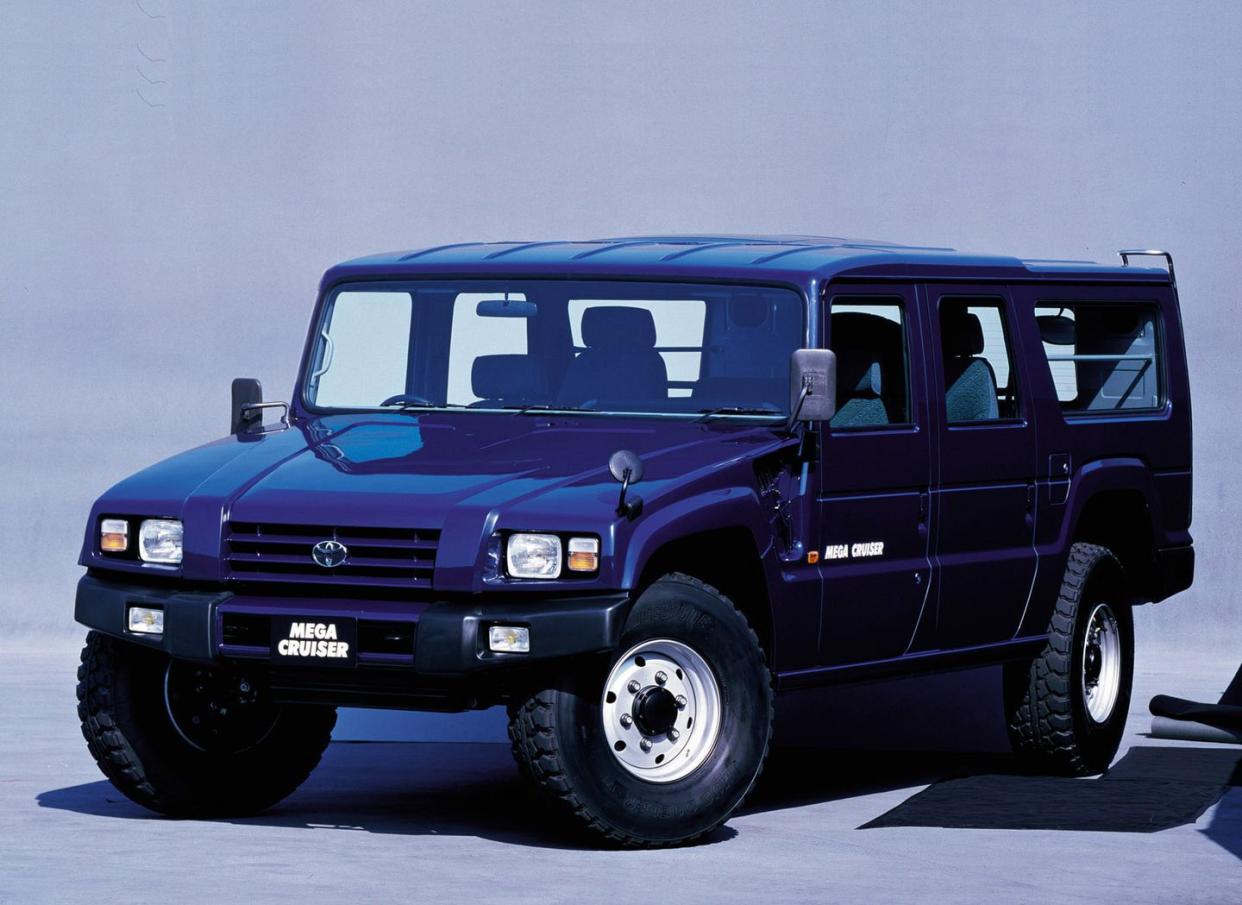
Like its American inspiration, Toyota offered its apex military 4x4 to the public. The civilian-spec model carried an original starting price of 9,620,000 Yen. That translated to about $85,000 in the United States in 1995 (or $158,000 in 2022 money). Because of the perfect storm caused by a suddenly uncertain Japanese economy, a one-two punch of hefty asking price and an utter lack of practicality, and a domestic vehicle tax system that saw registration fees balloon with a vehicle's size, fewer than 150 civilian examples were built. Today, with the first few years of Mega Cruiser production eligible for import under the U.S.s’ 25-year rule, your “obscure 4x4 fund” will need to sing to the tune of at least $150,000 before transport costs, import fees, etc., if you want a prayer of owning one; be warned, pre-imported models can go for double that.
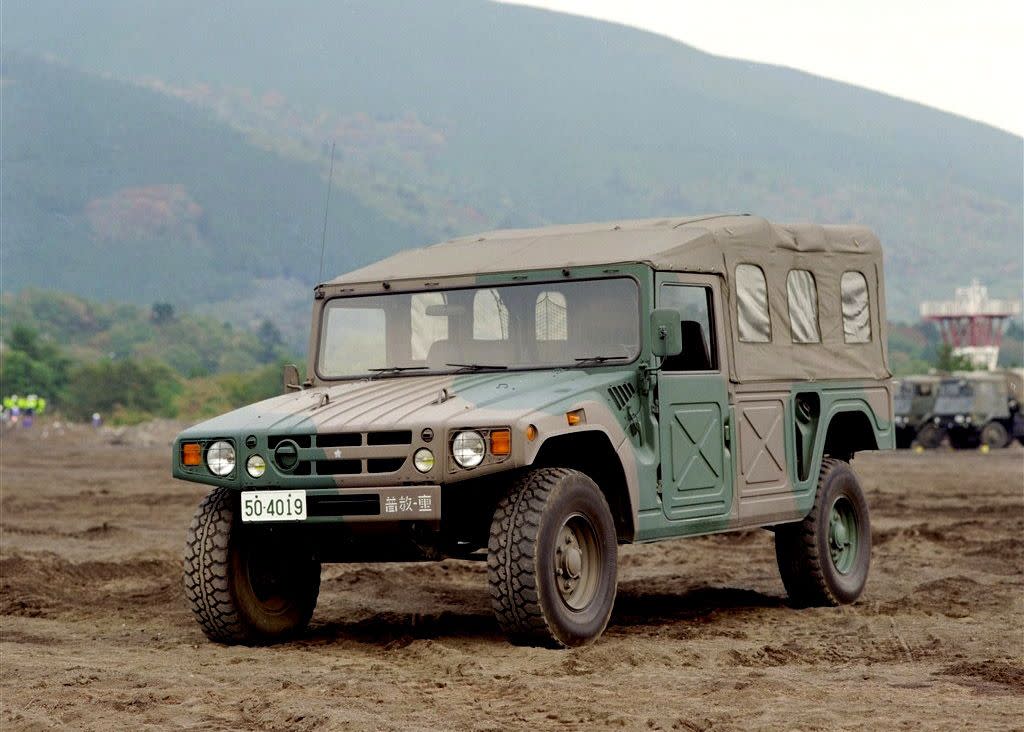
On top of those civilian-spec crown jewels, around 3,000 military MCs were built between the model’s debut and its 2001 discontinuation. These stripped models can be had for a much more reasonable sum; you’ll miss out on niceties like real wood-grain trim and heated seats, but all the JDM off-road know-how remains intact, making even the lowliest TMC desirable.
Nestled in a valley at the doorstep of Colorado’s Rocky Mountain National Park, you’ll find the town of Estes Park. Because of its distinct location, Estes has a GDP that is almost entirely propped up by outdoor tourism, and in this ecosystem of near-unlimited choices, WildSide 4x4 Tours reigns supreme. Their trucks are customized, maintained, and stored behind the scenes at the town’s old Chrysler dealership that WS has converted into a shop entirely deserving of its “Batcave” nickname.
Seeing a Mega Cruiser for the first time is a funny thing. Your mind will be forgiven for initially thinking it’s some kind of kit-Hummer, but don’t call the Toyota a knockoff. With factory dimensions of 200.4 x 85.4 x 81.7, it is a full 16 inches longer and nearly seven inches taller (ten inches with the optional “high roof”) than the Humvee, but also an inch slimmer. Compounding the Meg’s already menacing but somewhat awkward presence is the fact that WildSide's Mega Cruiser–nicknamed the Honey Badger–is carrying an intricate roll cage of metal and plexiglass over its three four-seat rows of custom, elevated seating.
Once you climb through one of the Badger’s front doors, which are strangely thin for something designed for combat, you find yourself boxed in by a massive console that puts about five feet between you and your passenger, making it the perfect vehicle for those who don’t enjoy conversation. After a quick interior rundown–there really isn’t much to see in retired duty units like this–we could finally hit the road. There were about four miles of pavement sitting between our downtown location and the loving embrace of dirt and jagged rock.
With its imposing physical size comes a great deal of heft. These things tipped Toyota's scales at a substantial 6,395 lbs. Providing animation to all that mass is the one bit of the Mega Cruiser’s spec sheet that could be considered disappointing; Toyota’s 15B-FTE 4.1-liter turbo-diesel inline-4. This mill made 153 HP and 282 lb-ft of torque, trailing the Humvee’s lineup of powertrains. It also falls far short of what American diesel buyers had come to expect in the mid-Nineties, when Dodge’s 5.9L Cummins and Ford’s 7.3L PowerStroke were making more than 400 lb-ft. On a per-liter basis, the 4.1 was a powerhouse, but we weren’t winning any drag races between the lights downtown. It reportedly takes the big Cruiser an eye-popping 20.6 seconds to pass the 60 MPH mark at sea level; but the best we could do at elevation was an indicated 80 KPH (49.7 MPH).
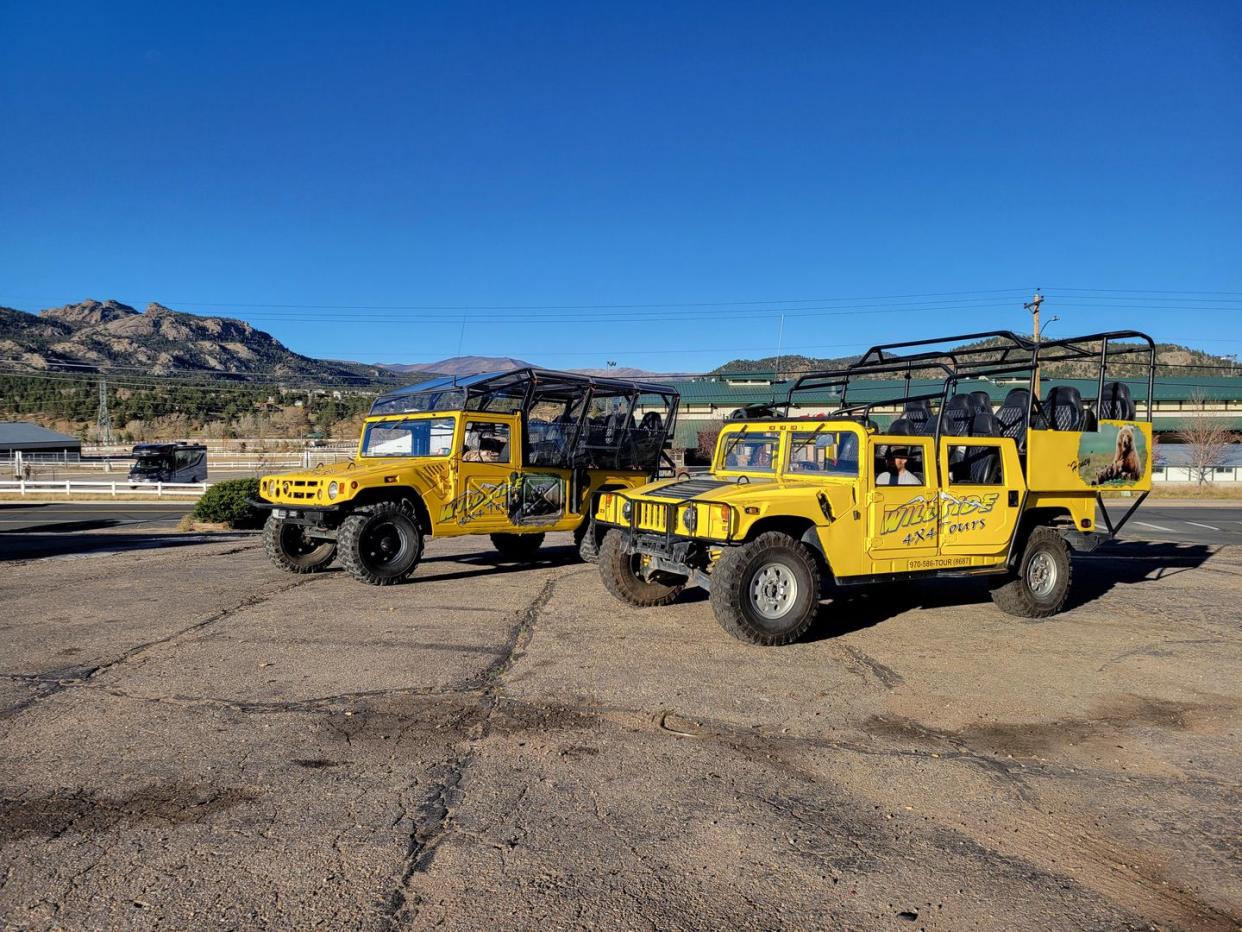
We turned off the pavement, much to the relief of the line of cars behind our burdensome rig, and wound our way up to Pole Hill Road Trail. The early stretch of Pole Hill is wide, with the exposed rock of the mountain reaching through the earth of the right-most section of the path to create a series of unpredictable rises and ruts that had the Tacoma TRD Pro driver ahead of us wisely going around on the dirt path of the left “lane.” The protruding boulders of this section and the later “devil’s staircase” portion of the trail give pause to all comers, but our truck had a secret weapon that allowed us to proceed with confidence.
For maximum ground clearance, Toyota engineers imbued all examples of their giant baby with portal axles. This technology relocates the differential yokes skyward from their traditional low-hanging position midway along the wheel centerline by connecting each axle to gearboxes that direct power down to the wheel hub units. Outside of a Mega Cruiser, the only places you are likely to come face-to-face with portal axles is by rolling yourself under an H1 or a modern G550 4x4.
The Meg leverages its portal axles to a ridiculous – and stoner-approved – 420 mm (16.5 inches) of ground clearance. That mark bests both the original H1 and GMC’s electric Hummer re-launch by 12.7 mm.
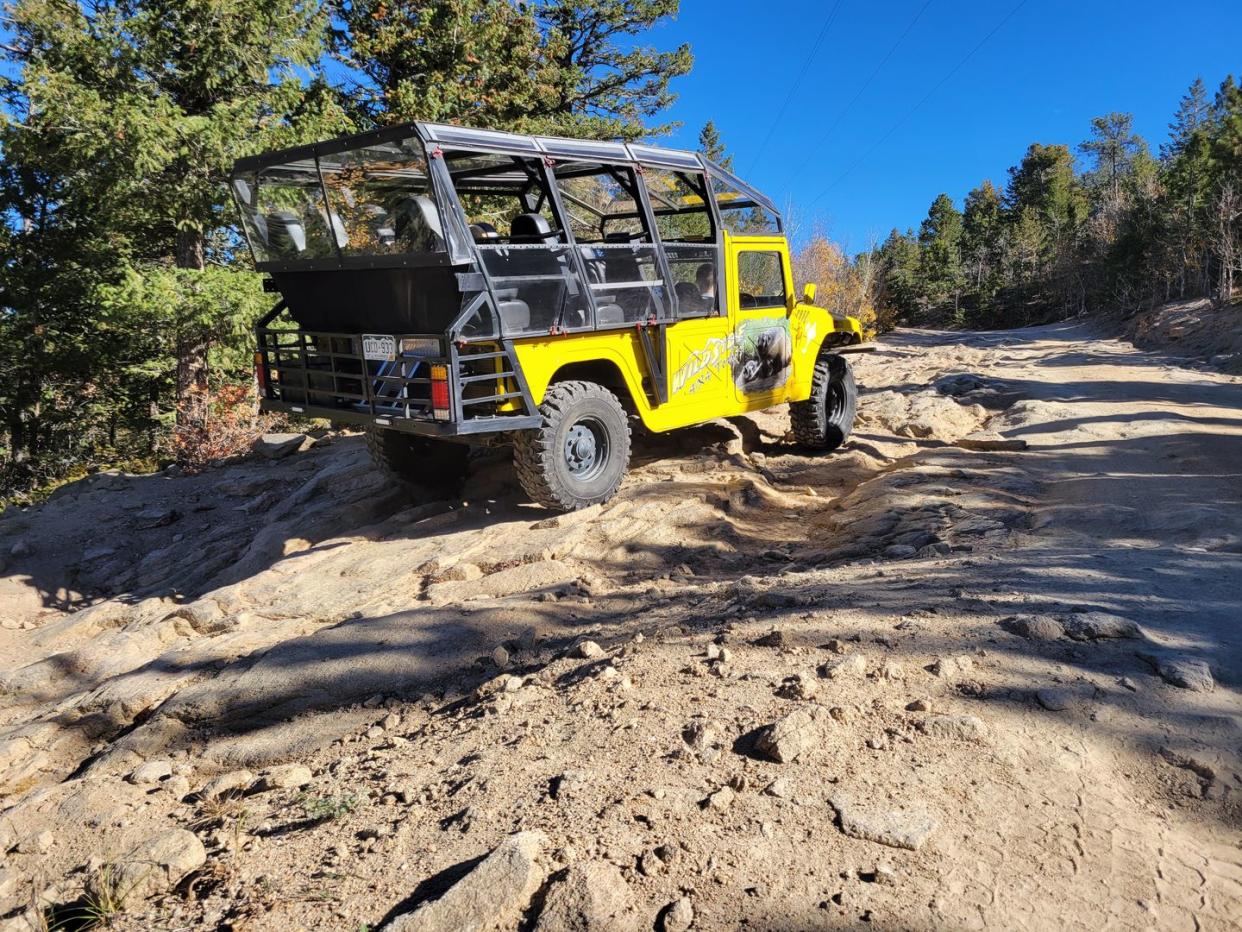
With that in mind, it was no surprise that our Mega Cruiser was able to transverse, climb, and straddle every obstacle on the purposely arduous path that Dan from WildSide and I could throw at it. The Meg made rock crawling, which is truly difficult, look effortless; the mechanical equivalent of those cliff-climbing goats that seem to be in every nature show. Our once-cumbersome steed and it’s trying powerplant now made perfect sense.As we proceeded along our jarring ascent from 7500 to more than 8500 feet above sea level, the TMC’s off-the-charts capabilities continued to impress. In our search for the perfect photo, it was the people who ended up throwing in the towel before the travel of the double wishbone four-wheel independent suspension would allow even a smidgen of sunlight to show between any of the 37-inch tires and the terrain that they were busy pounding into submission.
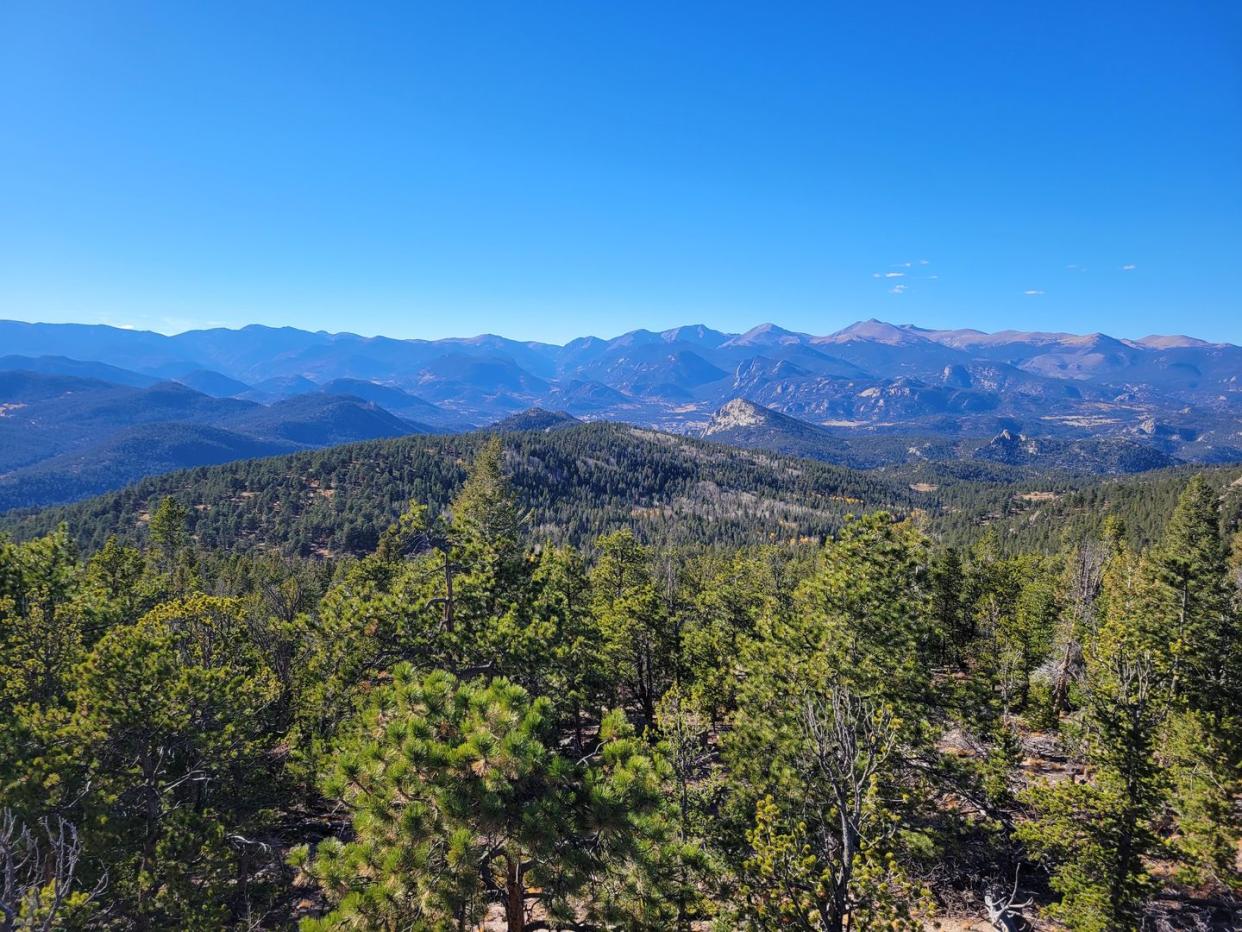
At the top, it performed a perfect u-turn. That might not sound impressive, but the turning circle on this thing is unreal. All Megas are equipped with a speed-sensitive four-wheel steering system that helps Toyota’s largest-ever SUV shrink when presented with tight quarters. That fancy power steering system is capable of turning its rear wheels up to 12° at full lock. That means the Mega Cruiser has an 18.4 foot turning circle. The Hummer H1 needs 26.5 feet.
Up to this point, the WildSide tour featured plenty of “Rockin." With a right turn, we’ve officially reached the “Roller Coaster” section, which trades Moab for a taste of Baja. With the pine needles brushing the mirrors on each side as we hustled down the black diamond side of the mountain, this monument to 90s Japanese engineering was suddenly anything but slow. It became exhilarating. Like all coasters, it was over too quickly, and we were suddenly faced with tarmac. The Honey Badger had flipped the switch back to the “completely out of its element” setting.
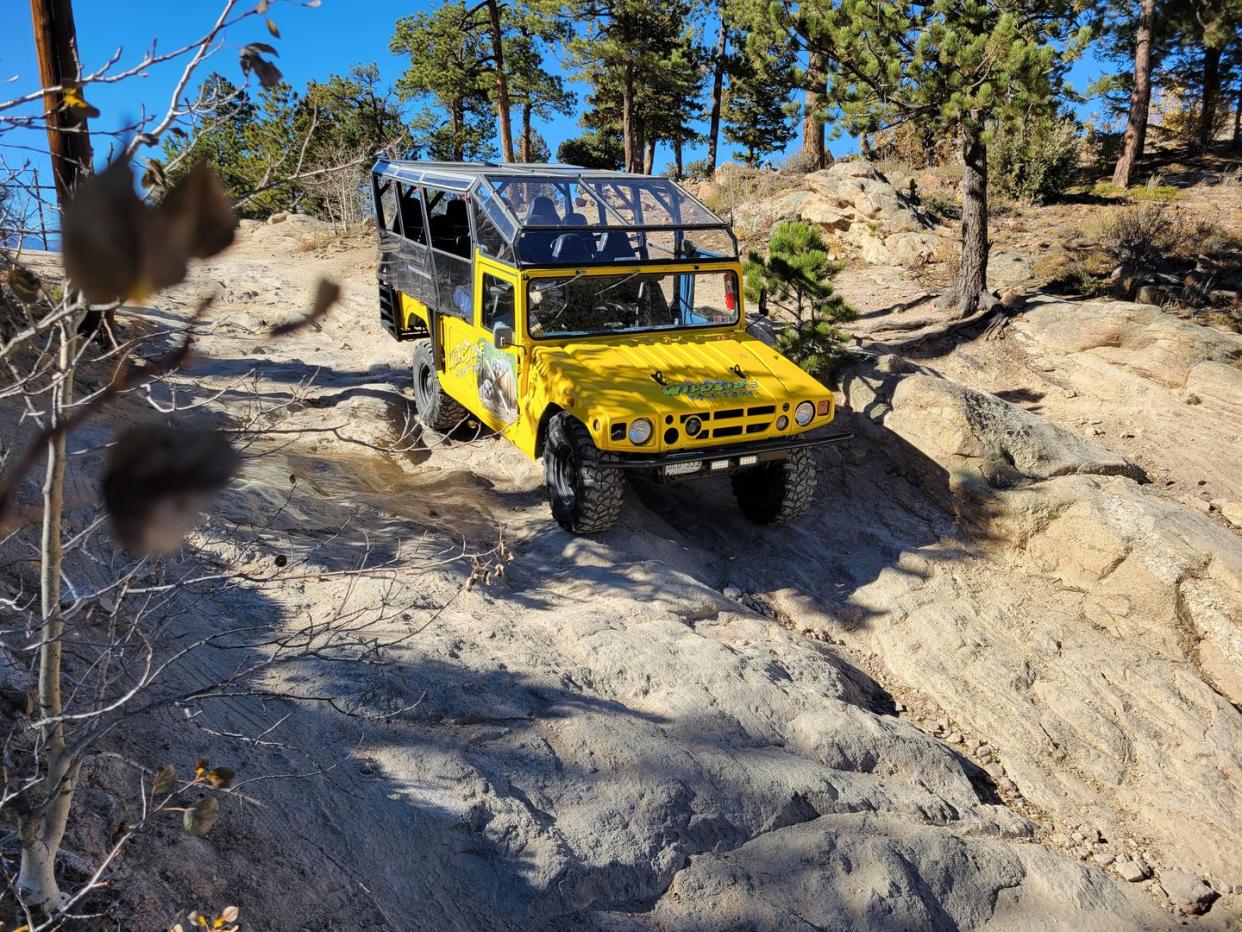
The neatest technical nugget to emerge as we thought about getting the Meg up to speed were the inboard ventilated disc brakes. By moving the brakes inward to the chassis instead of hanging out in the wheel hubs, engineers were no longer bound by wheel size and could implement larger discs. This practice also removes a good deal of unsprung mass and applies braking torque directly to the frame instead of having to go through the suspension arms; this last point presents a few disadvantages as well, but Toyota seems to have accounted for all of them. Megas share this tech with such heavy hitters as the E-Type Jag, Ferrari’s 312 F1 car of the ‘60s, the Lotus Esprit, the most expensive car ever sold, and, of course, the H1 Hummer.
On top of that, Mega Cruisers employ full-time four-wheel drive, limited-slip center-lock diffs, and a central tire inflation system that allows the driver to adjust individual tire pressures on the fly when a greater contact patch is required. The TMC’s design also allows for 49 and 45 degree approach and departure angles, respectively. As I came to expect during this experience, those numbers are superior to most 4x4s, present-day or otherwise.
Drive-wise, the H1 and TMC feel like mirror images of each other, save for the noticeable maneuvering prowess of the Toyota. They offer similarly poor acceleration as the Hummer’s extra ponies have more weight to haul around. Both suffer from a supremely rattly ride – a fact that is perpetually front-and-center due to the acre of plexiglass WildeSide festooned to each one’s roof, but problem-emphasizing modifications aside, these twins weren’t built for the kind of fellow who enjoys being pampered. It also sounds wrong even mentioning economy in this comparison, but Toyota quotes a statistic for the MC that is just too good not to share. If you keep the MCs speedo hovering around 40 mph, they say that their goliath SUV will return 22 mpg. While MPG@40 MPH isn’t something you’ll find on a window sticker, the possibility of even sniffing 20+ in the Mega is enough to make a surplus Hummer owner, and their “always under 12 mpg, but usually more like 6-8 m’s per g” jealous. Couple that surprising mileage with the MC’s 28.5-gallon fuel tank (depending on spec, H1s came with a 25–42-gallon capacity), and you could see upwards of 600 miles between multi-swipe trips to the diesel pump.
Weighing my enlightening offroad experience against the recent $315,000 US Mega Cruiser sale brought up more questions than answers.
Like most ultra-focused automobiles, the TMC is something that is absolutely worth decent “single-family home” money to the right buyer. As compromised as it is for everyday use, there is simply nothing that checks all of the same offroad boxes. Couple its once-in-a-lifetime abilities with its potent mix of rarity and 90s Toyota build quality, and you’ve got pure cat nip for some.
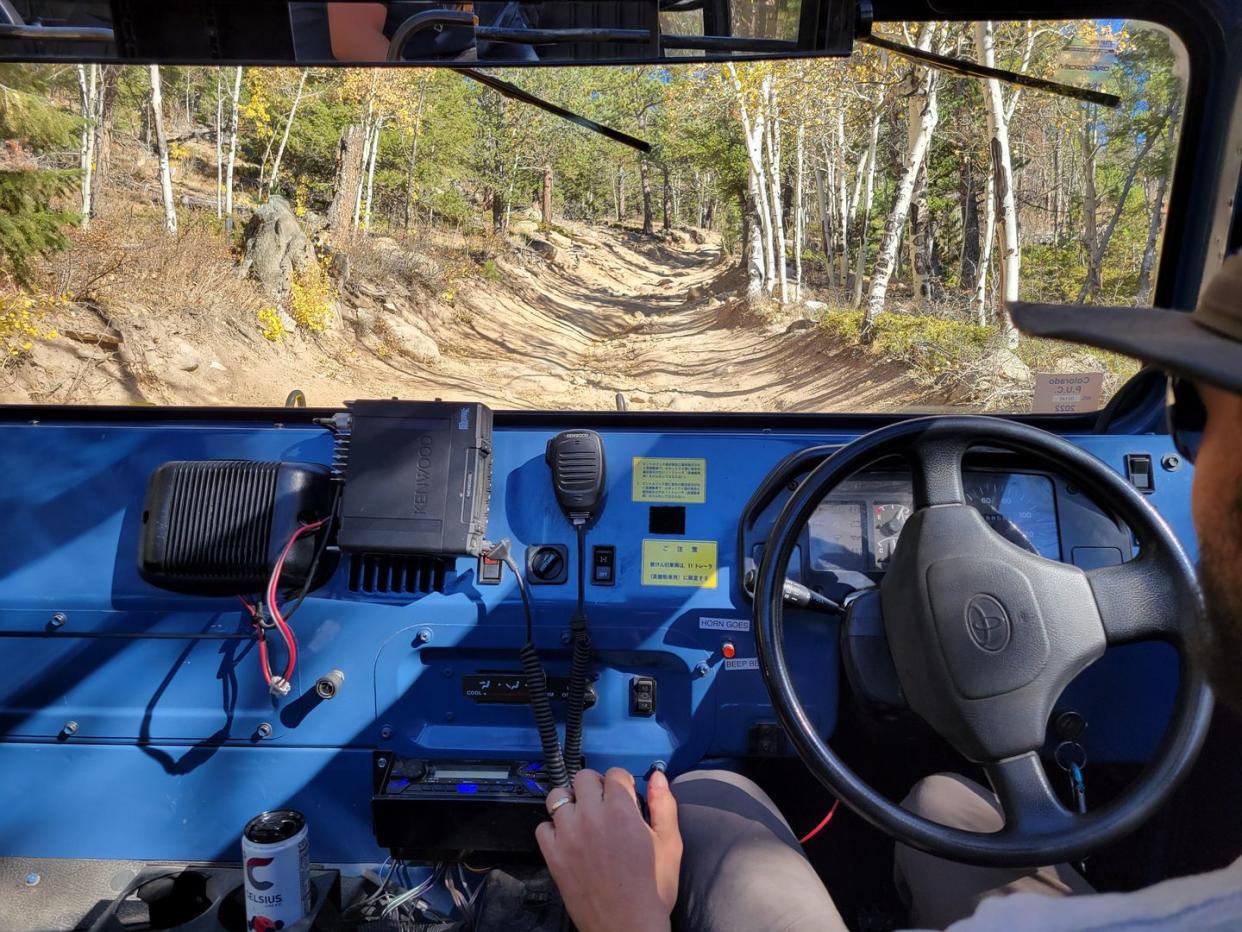
Unless you are one of those Toyota die-hards, the H1 might present the better value in top-shelf 4x4s. There are several ex-military examples available for less than $60,000, production went longer, so many are newer than an MC, the lower roof makes the whole package look better, and if you are a big-spender willing to give up the trick four-wheel-steering system for an under-hood upgrade, the 2006 H1 Alpha married the Humvee’s silhouette to General Motors’ knockout 6.6L Duramax and Allison heavy-duty transmission for one very special year. Low-mileage specimens of this 300-horse, 520 lb-ft panicle of the Hummer lineage can be had for around $200,000.
Then there’s the twin-turbo Mercedes G550 4x4 that has settled in at a value of around $175,000, and a new version coming this year. With many potential customers, though, the other options lose desirability points for their off-the-charts “look at me” factor and popularity with shallow celebrity types. The Mega Cruiser is brought to you by the sensible folks behind the Camry and Prius, making it by far the least ostentatious and most approachable member of this supergroup. In a world where the Gran Turismo generation is all grown up and driving the Japanese collector car market into the stratosphere, it might actually be time to buy low on the big ‘Yota.
You Might Also Like
